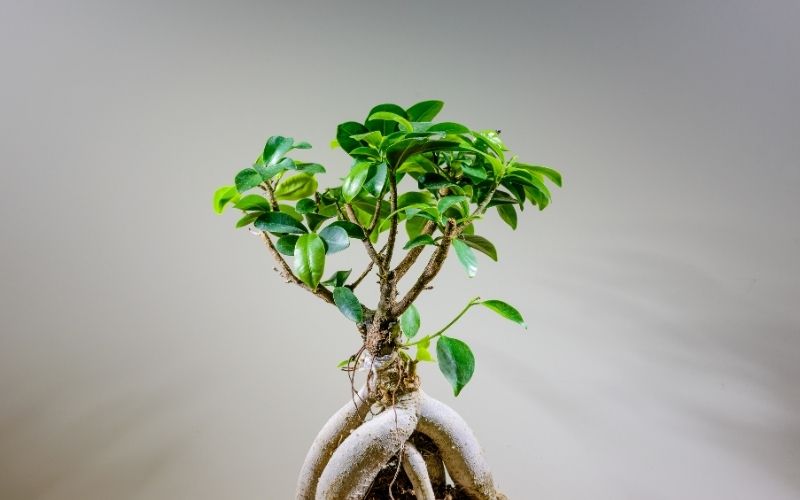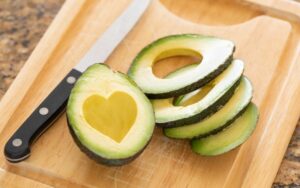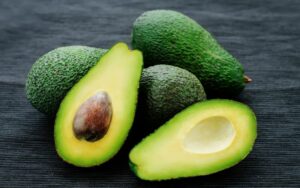Growing your own bonsai avocado tree is not only a rewarding experience but also a popular trend in many homes. People are increasingly drawn to the beauty and tranquility that these miniature trees bring to their living spaces. In this section, we’ll explore the reasons behind the growing popularity of avocado bonsai plants and how they have become a favorite among gardening enthusiasts. Additionally, we’ll uncover the surprising health benefits that these bonsai trees offer, making them not just aesthetically pleasing but also beneficial for your well-being.

The popularity of avocado bonsai plants in homes
In homes, avocado bonsai plants are gaining popularity due to their unique and captivating beauty. Many people are drawn to these miniature trees as they add a touch of nature and elegance to indoor spaces. Avocado bonsai trees not only serve as aesthetically pleasing decorations but also provide various health benefits.
Avocado bonsai plants have become a popular choice among plant enthusiasts for their easy maintenance and care requirements. With proper pruning and shaping techniques, these trees can be sculpted into beautiful miniature versions of their larger counterparts. Whether starting with a seedling or purchasing from a nursery, anyone can enjoy the process of growing an avocado bonsai tree.
Is it possible to shrink an avocado tree so small that it fits in your hand? Let’s find out!
Can I Bonsai an Avocado Plant?
When it comes to bonsai trees, enthusiasts often wonder if they can successfully bonsai an avocado plant. The answer to this question lies in understanding the process of pruning and shaping the tree, as well as the options for acquiring a suitable avocado plant. In this section, we’ll explore the fascinating journey of transforming an avocado plant into a bonsai marvel. Whether you’re keen on learning about the intricacies of pruning or considering options for starting with a seedling or purchasing from a nursery, this section will guide you through the steps and possibilities of bonsai-in an avocado tree.

How to Grow a Bonsai Avocado Tree?
When it comes to growing an avocado bonsai, there are several key steps to follow. First, selecting the right avocado tree for bonsai is crucial. This part will guide you through the necessary considerations in order to choose the perfect tree that is suitable for bonsai cultivation. Next, we’ll explore the importance of cleaning and pruning the roots. Additionally, we’ll discuss the significance of choosing the right pot for your avocado bonsai and how it can impact the overall well-being of the plant.
Selecting the right Bonsai Avocado Tree
Avocado Tree Selection for Bonsai When choosing an avocado tree for bonsai, it is crucial to consider several factors to ensure the best results.
Here are five important points to keep in mind:
– Size: Opt for a smaller-sized avocado tree variety as it will be more suitable for bonsai cultivation.
– Form and Shape: Look for avocado trees with interesting and unique features such as twisted trunks or branches, which can enhance the aesthetic appeal of your bonsai.
– Leaf Characteristics: Consider the size, shape, and texture of the leaves. Smaller leaves will be more proportionate to the bonsai tree’s reduced size.
– Growth Pattern: It is advisable to select trees with a natural compact growth habit that makes it easier to shape and maintain.
– Root System: Check if the tree has a well-developed root system. A good root structure will help support healthy growth in a container environment. In addition to these considerations, selecting a tree that is disease-resistant and adaptable to different growing conditions can greatly contribute to the success of your avocado bonsai.

Choosing the Perfect Pot for Your Avocado Bonsai
To ensure the optimal growth and development of your avocado bonsai, selecting the right pot is crucial. Consider the following factors when choosing the perfect pot for your avocado bonsai:
Size: Choose a pot that allows enough room for root growth but isn’t too large. A pot that is slightly larger than the current root ball is ideal.
Material: Opt for a durable and porous material, such as terracotta or ceramic. These materials provide good drainage and allow air to circulate around the roots.
Shape: Look for a pot with a wide base and shallow depth. This shape will help promote stability and prevent root rot.
In addition to these considerations, it’s important to regularly check the condition of your pot. If you notice any cracks or signs of damage, it’s best to replace it to ensure the health of your avocado bonsai.
Positioning considerations: Place your avocado bonsai tree in a location where it can receive sufficient sunlight throughout the day. Additionally, consider factors such as wind exposure and protection from extreme temperatures.
Preparing the pot with the appropriate soil
When preparing the pot for your avocado bonsai tree, it is important to use the appropriate soil. This ensures that the tree receives the necessary nutrients and moisture for optimal growth and development.
Here is a 4-step guide to preparing the pot with the appropriate soil:
- Choose a well-draining soil: Avocado trees prefer soil that drains well to prevent waterlogging, which can lead to root rot. Look for a soil mix that contains a combination of organic matter, such as compost or peat moss, and inorganic material like perlite or vermiculite. This helps in creating a porous and airy environment for the roots.
- Ensure good nutrient retention: Avocado trees require rich soil with good nutrient retention capabilities. Incorporate slow-release fertilizers into the soil mix or add organic matter like compost, which provides essential nutrients over time.
- Maintain pH balance: Avocado trees thrive in slightly acidic to neutral pH levels (around 6-7). Test the pH level of your soil and make adjustments if needed by adding amendments like lime or sulfur.
- Properly fill the pot: Fill the pot with the prepared soil mixture, leaving enough space at the top for watering and room for root growth. Gently firm down the soil to remove any air pockets.
It is also worth noting that when preparing the pot with appropriate soil, avoid using garden soils directly as they may not provide adequate drainage or nutritional requirements specifically tailored for potted plants.

Cleaning and pruning the roots of the tree
To properly maintain the health and growth of your bonsai avocado tree, it is essential to regularly clean and prune its roots. This process helps in preventing root rot, promoting proper nutrient absorption, and maintaining the overall well-being of the tree.
1. Carefully remove the avocado bonsai from its pot.
2. Gently shake off excess soil to expose the root system.
3. Use sharp, sterilized scissors or shears to trim any damaged or diseased roots.
4. Shorten long, straggly roots to encourage a more compact root system.
5. Rinse the remaining roots with water to remove any clinging debris or soil particles.
6. After cleaning, examine the root ball for any signs of pests or diseases and take appropriate measures if necessary.
It’s important to note that when cleaning and pruning the roots of your avocado bonsai tree, you should avoid cutting too much at once as this can cause stress to the plant. Instead, opt for gradual pruning over time to promote healthy root growth.
Suggestions:
– Regularly inspect and clean your avocado bonsai’s roots every 1-2 years, or whenever you repot it.
– When trimming roots, aim for a balance between removing excess growth while preserving enough for proper nutrient absorption.
– Consider using a specialized bonsai tool like concave cutters for precise and clean cuts during root pruning.
Taking Care of Your Avocado Bonsai Tree
Regular watering and soil moisture of bonsai avocado tree
Regular irrigation and soil moisture are essential for the healthy growth of your bonsai avocado tree. Here are some important points to consider:
Watering frequency: Avocado bonsai trees require regular watering, ensuring that the soil is consistently moist but not waterlogged.
Proper drainage: It is crucial to provide proper drainage in the pot to prevent waterlogging, as excessive moisture can lead to root rot and other health issues.
Monitoring soil moisture: Regularly check the moisture level of the soil by inserting your finger into it. Water the tree only when the top layer feels slightly dry.
Misting leaves: Avocado bonsai trees appreciate high humidity, so misting their leaves with water daily or placing a humidity tray nearby can help maintain optimal moisture levels.

Feeding the bonsai tree with fertilizer
Select a suitable fertilizer: Choose a balanced, slow-release fertilizer specifically formulated for bonsai trees. This will provide the necessary nutrients in a controlled manner over an extended period of time.
Determine the appropriate dosage: Follow the instructions provided by the manufacturer to determine the correct amount of fertilizer to use. Avoid over-fertilizing as this can lead to nutrient burn or other adverse effects.
Apply the fertilizer: Gently spread the fertilizer on top of the soil, ensuring an even distribution across the pot. Take care not to disturb the roots or foliage of the bonsai tree during this process.
Timing of fertilization: Fertilize your bonsai avocado tree during its active growing season, typically from spring through summer. Adjust the frequency of application based on the specific requirements of your tree species.
Watering after fertilization: After applying fertilizer, thoroughly water your bonsai tree to help distribute and activate the nutrients within the soil. This will also prevent any potential damage caused by concentrated levels of fertilizer.
Monitor and adjust: Regularly observe your bonsai avocado tree for signs of nutrient deficiency or excess. Adjust your fertilization routine accordingly to maintain optimal health and growth.
In addition to these steps, it is important to consider other factors such as the age and size of your bonsai tree when determining fertilization requirements.
Pruning bonsai avocado tree branches to maintain desired size
Pruning the branches of your avocado bonsai tree is essential for maintaining its desired size. By selectively trimming the branches, you can shape the tree and prevent it from becoming too large or unruly. Proper pruning techniques will help create a balanced and aesthetically pleasing bonsai tree.
Here is a step-by-step guide on how to prune the branches to maintain the desired size of your avocado bonsai:
Evaluate the tree: Begin by assessing the overall shape and size of your bonsai tree. Identify any branches that are too long, crowded, or growing in undesirable directions.
Selective pruning: Use sharp and clean pruning shears to carefully trim away any unwanted branches. Start with removing dead or damaged branches first. Then, selectively prune branches that are overly long or out of place, taking care not to remove too much foliage at once.
Maintain balance: As you prune, strive for a balanced distribution of branches throughout the tree. Ensure that no one side becomes overly dominant in terms of foliage density or branch growth.
Promote new growth: Pruning stimulates new growth in an avocado bonsai tree. By selectively removing old or excess foliage, you encourage the development of fresh shoots and encourage a more compact growth habit.
Regular maintenance pruning: It is important to regularly inspect and prune your bonsai tree to keep it in shape. This may involve light trimming every few months or more extensive pruning annually, depending on how fast your avocado bonsai grows.
Patience is key: Remember that pruning takes time for the desired effect to be achieved, especially with trees as they have slower growth rates than other plants. Be patient and allow your avocado bonsai tree time to respond to each round of pruning before making further adjustments.
Providing Optimal Sunlight and Shade for bonsai avocado tree
Avocado bonsai trees require the right balance of sunlight and shade to thrive. Here’s how you can ensure your tree gets the ideal amount of both:
Sunlight: Avocado bonsai trees need direct sunlight for at least six hours a day. Place your tree in a location where it can receive ample sunlight, preferably near a window or outdoors in a spot that is not too exposed to extreme heat. This will allow the tree to photosynthesize and grow optimally.
Shade: While avocado trees need sunlight, they also benefit from some shade during the hottest parts of the day. Too much direct sun exposure can scorch the leaves and hinder growth. Providing partial shade during peak daylight hours will help protect the tree from excessive heat and maintain its health.
It is important to strike a balance between providing enough sunlight for growth and ensuring adequate shade for protection. By finding the right spot and managing exposure accordingly, you can optimize your avocado bonsai tree’s chances of thriving.
To prevent leaf burn or stress, it is recommended to gradually acclimate your avocado bonsai tree to direct sunlight if it has been indoors or in a shaded area. Start by exposing it to indirect sun for shorter periods, gradually increasing the duration over time. This gradual transition helps prevent shock and allows the tree to adjust successfully.

Avoiding toxic substances near the bonsai avocado tree
Bonsai trees require a healthy and safe environment to thrive. It is important to ensure that no toxic substances come in contact with the bonsai tree. This includes avoiding the use of pesticides or chemical fertilizers near the tree. By keeping the area around the bonsai tree free from harmful substances, you can maintain its well-being and promote its growth.
Toxic substances can have detrimental effects on the health of your bonsai tree. They can interfere with its ability to absorb nutrients and water, leading to stunted growth or even death. It is crucial to be mindful of what you expose your bonsai tree to, as even small amounts of toxins can have a significant impact over time.
How to Grow bonsai avocado tree from Seedling?
Growing an avocado bonsai from seedling can be a rewarding and enjoyable experience. To set yourself up for success, it’s important to carefully consider various aspects of the process. First, you’ll need to choose the right well-draining soil to ensure optimal growth conditions. Then, finding the perfect balance of shade and sunlight is essential for the healthy development of your bonsai. Regular watering and monthly fertilization will provide the necessary nutrients for its growth. Lastly, trimming off excess growth will help maintain the desired shape of your avocado bonsai. With these key steps in mind, you’ll be on your way to cultivating a stunning and thriving avocado bonsai tree.
Planting the seedling in well-draining soil
Planting the seedling in a soil that allows for proper drainage is essential for the successful growth of an avocado bonsai tree. To ensure healthy root development and prevent waterlogging, follow this step-by-step guide:
1. Choose a well-draining soil mixture: Opt for a blend of organic matter such as peat moss or compost, mixed with coarse sand or perlite. This combination improves soil aeration and drainage, preventing water from accumulating around the roots.
2. Prepare the planting hole: Dig a hole in the selected pot or container that is slightly larger than the root ball of your avocado seedling. Ensure there are adequate drainage holes at the bottom to facilitate water flow.
3. Gently remove the seedling from its container: Carefully loosen the roots of the avocado seedling to promote outward growth and establish them in the new soil environment.
4. Place the seedling in the prepared hole: Position the seedling in the center of the hole, ensuring that it sits at a similar depth as it did in its previous container. Avoid burying too deep or exposing too much of the stem above ground level.
5. Fill and firm up with soil: Backfill the hole with your prepared soil mixture, carefully packing it around roots to eliminate air pockets. Lightly press down on the soil to stabilize the seedling without compacting it excessively. It is worth noting that when planting an avocado bonsai tree, maintaining well-drained soil is crucial to prevent overly wet conditions that can lead to root rot and other diseases. Adequate drainage promotes healthy root growth and ensures optimum moisture levels for your plant’s overall health and vitality.
Providing the right amount of shade and sunlight
Providing the optimal balance of shade and sunlight is crucial for the health and growth of your bonsai avocado tree. By ensuring that your tree receives the right amount of shade and sunlight, you can create an ideal environment for its development. This will help to maintain the tree’s vigor and overall appearance, allowing you to fully enjoy the beauty of your bonsai avocado tree.
One way to achieve this balance is by placing your bonsai avocado tree in a location where it can receive partial sunlight throughout the day. This means positioning it in an area that gets a few hours of direct sunlight, followed by partial shade during the hottest parts of the day. You can achieve this by placing your tree near a window with filtered light or by using a sheer curtain to modify the intensity of sunlight.
Regular watering and monthly fertilization
Watering: Ensure that you provide your bonsai avocado tree with regular watering. The frequency will depend on various factors such as the size of the pot, weather conditions, and the moisture needs of the tree. Avoid over-watering or letting the soil dry out completely.
Soil Moisture: Check the moisture level of the soil regularly by inserting your finger about an inch deep into the soil. If it feels dry, it’s time to water your tree. If it feels moist, wait a little longer before watering.
Fertilizing: In addition to regular watering, monthly fertilization is important for providing your bonsai avocado tree with essential nutrients. Use a balanced liquid fertilizer specifically formulated for bonsai plants according to the instructions on the label.
Fertilizer Dilution: It is recommended to dilute the fertilizer with water to avoid excessive nutrient buildup that can damage the roots. Follow the recommended dilution ratio provided by the manufacturer.
Application Technique: When applying fertilizer, ensure that you evenly distribute it across the soil surface. Avoid applying it directly onto the trunk or foliage of your bonsai avocado tree.
Timing: Fertilize your bonsai avocado tree once a month during its active growth period, typically from spring to early fall. Reduce or stop fertilization during its dormant period in winter.
The health benefits of avocado bonsai trees
The health benefits of bonsai avocado trees go beyond just their aesthetic appeal. These miniature trees can purify the air in your home, helping to reduce pollutants and improve indoor air quality. Avocado bonsai trees also release high levels of oxygen, which can promote better respiratory health. Additionally, the act of caring for a bonsai tree can provide stress relief and improve mental well-being. So not only do these trees add beauty to your living space, but they also contribute to a healthier environment for you and your family.
When it comes to the health benefits of avocado bonsai trees, it is important to note that these miniature plants have properties similar to full-sized avocado trees. Avocados are known for their high nutrient content, including vitamins such as vitamin E and vitamin C, as well as minerals like potassium and magnesium. These nutrients are essential for maintaining healthy skin, boosting immune function, and supporting overall wellness. Incorporating avocados into your diet can help promote heart health, regulate blood pressure levels, and even aid in weight management.
Conclusion
In the journey of cultivating a bonsai avocado tree, every step, from selecting the perfect seedling and pot to mastering the art of pruning, is imbued with a sense of fulfillment. These miniature marvels are not just a testament to aesthetic refinement but are also silent sentinels that purify the air we breathe. As you nurture them, they, in turn, contribute to your well-being, making the process mutually enriching. Whether you’re a seasoned gardener or a novice, the bonsai avocado tree stands as a testament to the beauty that arises from the harmonious convergence of art, nature, and care. Dive into this rewarding experience and let each leaf and branch tell a story of growth, resilience, and quiet elegance.




